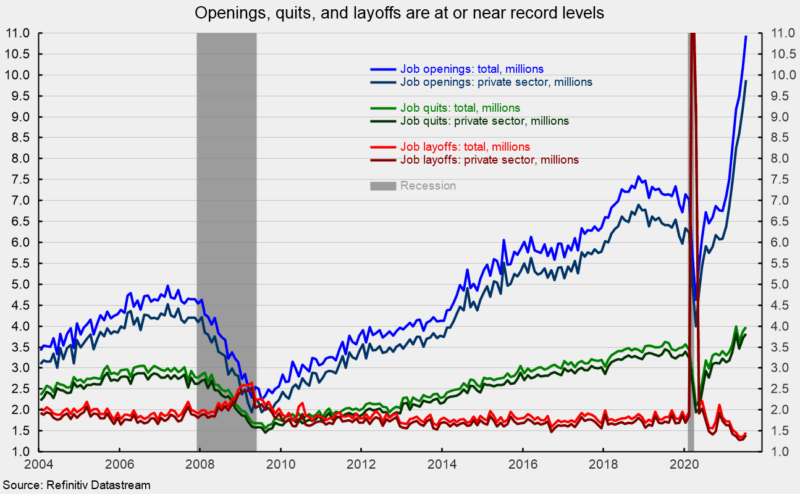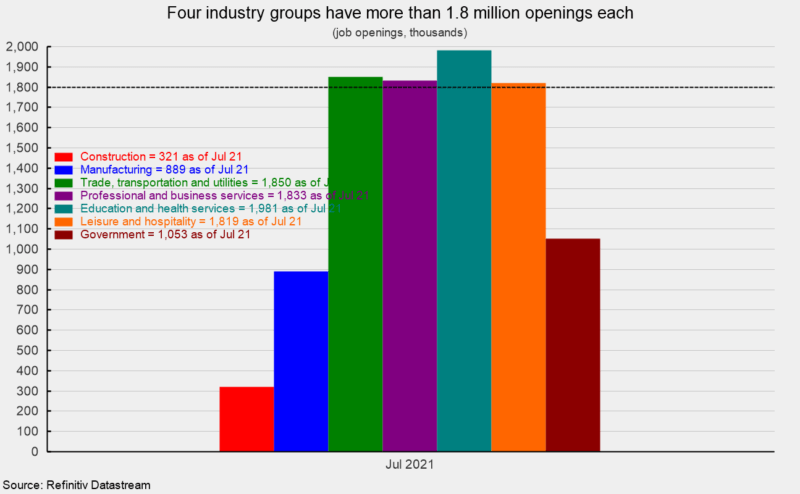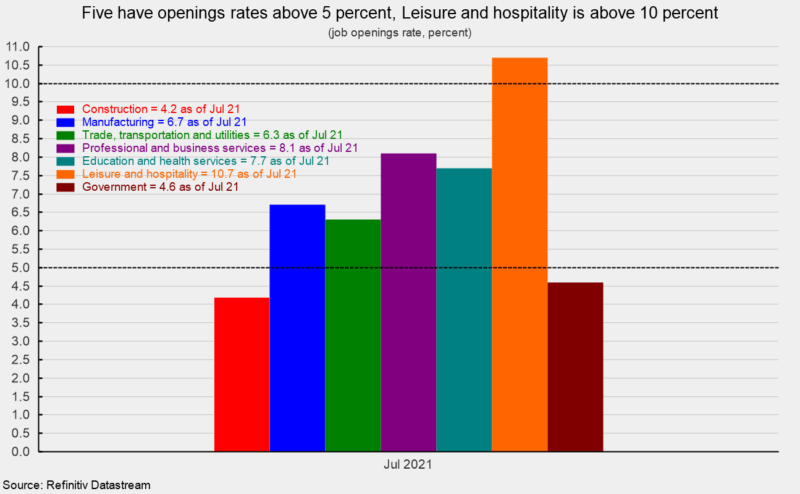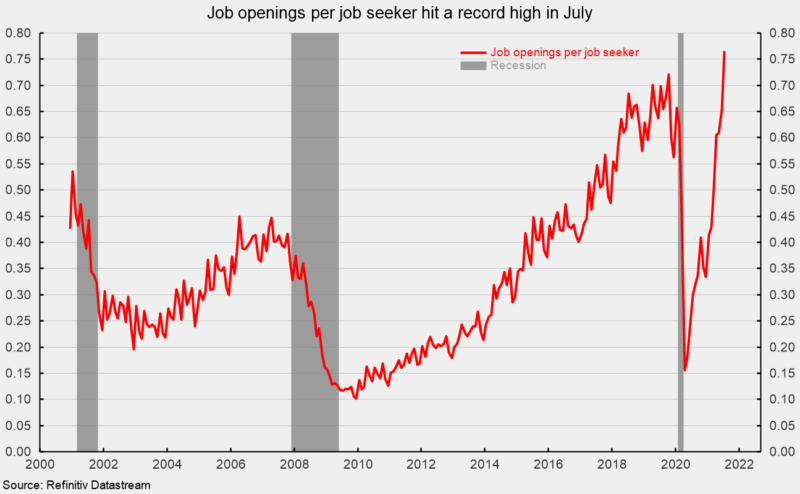Job Openings Hit Another Record High in July
The latest Job Openings and Labor Turnover Survey from the Bureau of Labor Statistics shows the total number of job openings in the economy rose to 10.934 million in July, up from 10.185 million in June, and another new record high. The number of open positions in the private sector increased to 9.881 million in July, up from 9.226 million in June, also another new record high (see first chart).
The total job openings rate, openings divided by the sum of jobs plus openings, rose to a record 6.9 percent in July while the private-sector job-openings rate surged to a record 7.3 percent.
Private hires in July totaled 6.166 million versus 6.827 million in June. At the same time, the number of private-sector separations rose to 5.515 million in July, up from June’s 5.350 million. Within separations, private quits were 3.815 million (versus 3.713 million in June) and private layoffs were 1.399 million, up from 1.300 million in the prior month (see first chart).
The total separations rate rose to 3.9 percent from 3.8 percent in the prior month with the private sector experiencing a rate of 4.4 percent, up 0.1 percentage points from 4.3 percent in June. The private quits rate rose to 3.1 percent from 3.0 percent in June while the private layoffs rate was a very low 1.1 percent.
Four industry categories have more than 1.8 million openings each: education and health care (1.981 million), trade, transportation, and utilities (1.850 million), professional and business services (1.833 million), and leisure and hospitality (1.819 million; see second chart).
The highest openings rates were in leisure and hospitality (10.7 percent), professional and business services (8.1 percent), education and health care (7.7 percent), manufacturing (6.7 percent), and trade, transportation, and utilities (6.3 percent; see third chart).
From the worker perspective, labor market conditions remained very favorable in July. The number of openings per job seeker (unemployed plus those not in the labor force but who want a job) jumped to a record high 0.766 in July, up from 0.655 in June, and above the previous record high of 0.721 in October 2019 (see fourth chart).
Overall, today’s job openings data continue to suggest a very tight labor market. However, the weaker-than-expected August jobs report showed a net increase of just 235,000 payroll jobs, though the weakness was largely concentrated in Leisure and hospitality as well as retail employment. The poor showing for leisure and hospitality and retail reflects the impact the surge in new Covid cases is having on consumers and businesses. Still, private-sector surveys suggest businesses are struggling to find and retain qualified workers. These conflicting messages cloud the economic outlook.









